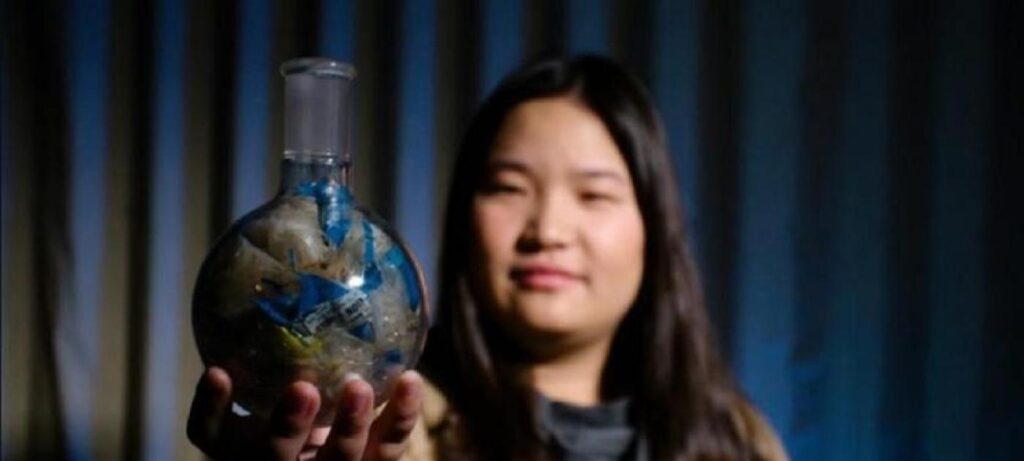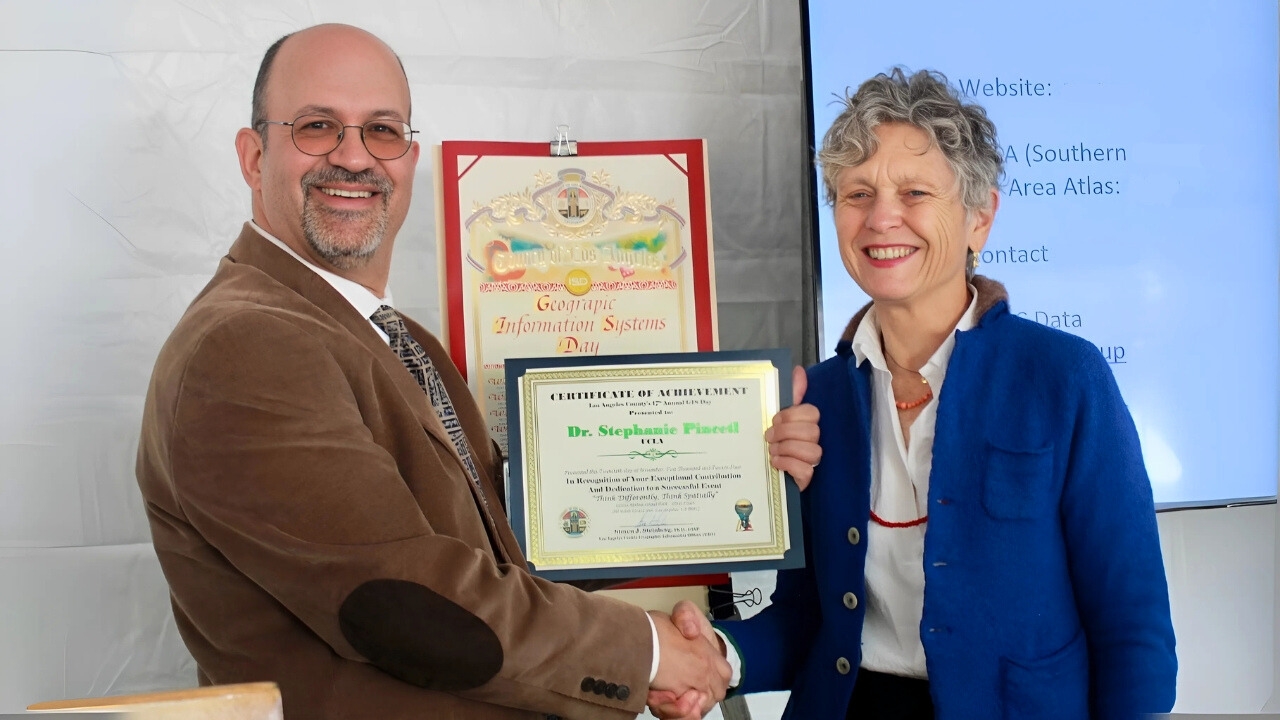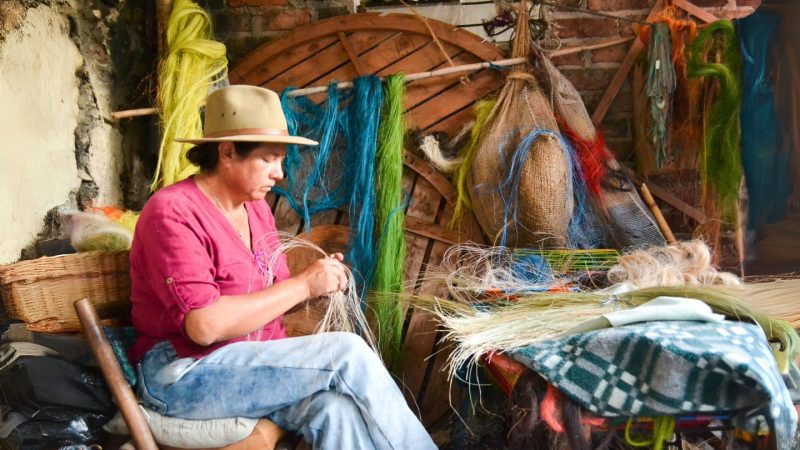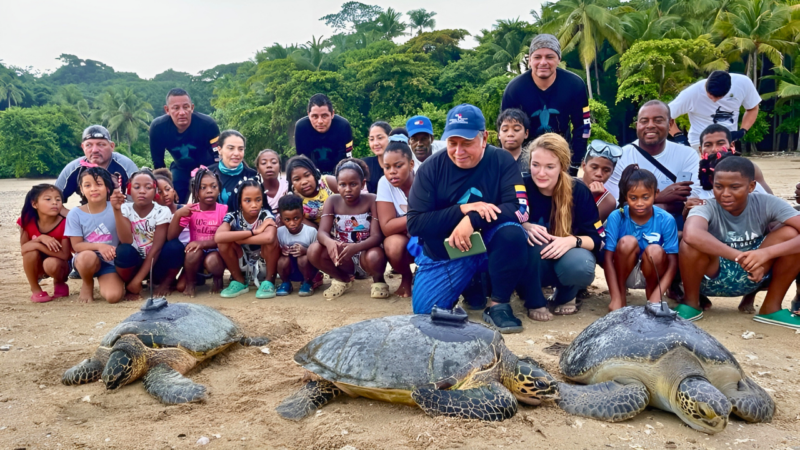
Q&A with Miranda Wang, 2018 Pritzker Genius Award winner
Since winning the 2018 Pritzker Emerging Environmental Genius Award last November, the 25-year-old chemist and the company she co-founded, BioCellection, have been refining a new system that breaks down previously…
Miranda Wang’s had a busy year.
Since winning the 2018 Pritzker Emerging Environmental Genius Award last November, the 25-year-old chemist and the company she co-founded, BioCellection, have been refining a new system that breaks down previously unrecyclable plastic and turns it into useful materials. Their effort coincides with an escalating plastic waste crisis that has governments, nonprofits and businesses scrambling for answers.
As we look forward to November 7, when UCLA will name this year’s Pritzker Award winner from among three finalists, we caught up with Wang for a conversation about her latest work, the plastic crisis and what she thinks about this year’s finalists.
What have you and BioCellection been up to since you won the Pritzker Award last year?
We created this technology that transforms unrecyclable plastics, specifically polyethylene plastic — which is used in shopping bags, Ziploc bags, pallet wrap, all sorts of films and flexible packaging, as well as a high-density form that’s used in shampoo containers and common materials like that — into chemical building blocks. Last November, we had just gotten the technology to work.
At the time, we had three or four people including cofounder Jeanny Yao and myself. With the award money, we started building out the team to include chemists and chemical engineers, analytical chemists and polymer scientists. Together, we took the technology to the next step, scaling up and purifying the end chemicals to 99% — but we were losing a lot of the chemical products in the process. We were also still searching for a way for our technology to go from a linear to circular economy, or an economy that eliminates waste and constant use of resources.
In June, we crossed an important barrier. We previously thought we only had to create a technology to turn plastic waste into chemicals. It’s not as simple as that. This space is so underdeveloped that not only do we have to make the chemicals, we need to develop a way to turn those chemicals into finished materials or a finished product. We’ve been able to map out ways these chemicals can make performance materials such as nylons and polyurethanes for cars or shoes. They can also make biodegradable materials — superabsorbent polymers that can be used in sanitary napkins or diapers and break down after that.
What are your goals for next year? I’m sure a lot of people are eager to see your method put to use at a mass scale.
Next year we’re scaling up our process and building it into a machine that can process plastics from beginning to end. We’re taking something that scientists are doing right now in lab glassware and scaling it up. It’s sort of like cooking, where if you’re cooking yourself soup, then make it in a pot. But if you own a soup company and you’re trying to package Campbell’s soup, you’re going to make it in a huge vat with all sorts of piping and entire manufacturing line.
More importantly, we’re developing quality control parameters. The chemicals coming out need to achieve a certain set of specs for us to use them. We’re creating an entire vertically integrated method of taking waste plastics, breaking them down, and rebuilding with them again.
What is your general take on the global situation with recycling, and is what you’re trying to do a potential solution?
China stopped taking recycling imports at the beginning of 2018. The issue is not that China doesn’t accept stuff anymore, it’s that the country upgraded its expectations to include only materials with less than 0.5% contamination. As it should. Those are the only plastics existing technologies can recycle into acceptable products. Everything else that used to get dumped on China is useless. An now the world is starting to wake up to the reality. People are looking at these tiny numbers like that only 9% of plastics are recycled. They’re thinking “Why? We’re all putting things in recycling bins. Why is it not recycled?” It’s a technological problem in large part. You currently can’t make something that has market value with most plastic waste. I arrived at this conclusion years ago, after visiting waste plants, seeing the material and sampling it.
It’s been an uplifting year for us at BioCellection. Progress can feel slow, but it typically takes hard tech companies 20 years to scale up. I think we’ll get there much sooner, within eight years from the day we founded the company — 2023. The world is desperate for a quick answer to the plastic problem, but there are a lot of things we need to get right before we can say “give us all your plastics.”
It would seem like municipalities, states and the federal government should be investing in newer technologies, if that’s a big part of the problem. Is that not something they’re doing?
That’s exactly what they’re doing. The City of San Jose and GreenWaste Recovery, their contracted recycling company, spent $240,000 over the past year to support our pilot. It’s only a percentage of what our actual research and development costs are, but these are public dollars, so they’re limited. Public funds at the city level are typically not used for research and development.
This past year has been wild in many ways. Like Greta Thunberg said, people are not acting like their house is on fire, but it is on fire. In the climate space, more people are realizing what actions must be taken, or at least becoming aware that they need to act. In the plastic space, there’s just panic. There’s not yet a clear consensus of what must be done. Everybody is saying “ban the stuff,” but you can’t just ban your way out of this material. Over 340 million tons is produced every year, and it’s increasing as population increases. This material is not here by accident. We clearly need a way to deal with it after we use it.
In the past year, has the Pritzker Award helped advance your work?
Absolutely. Since winning the Pritzker Award, (judge) Wendy Schmidt and (nominator) Steve Westly have been extremely helpful. Wendy has, on multiple occasions, helped us with funding applications. She deepened her understanding of what we’re doing, and how this is a unique solution that has a shot at fixing this huge problem. Her foundation really embraced us. I think she wouldn’t have really known what we were doing without the Pritzker Award. Steve’s family brought on a coach who built leadership across our entire team. That helped us create a culture of mutual trust and being okay with mistakes and failures, which is difficult among a group of high-performing scientists. These human connections came out of the award. We’re seeing familiar faces now, and are part of a community that is deeply embedded in the issue of plastic waste. Last year, our solution was largely unheard of. People didn’t know we were working on it. We were almost out of funding. Having the names Pritzker and UCLA attached to our work lent us a lot of social capital.
What do you think of this year’s candidates and the fact that they’re all activists?
This is what I really love about the Pritzker Award — it recognizes we need people across different spheres to move forward together. What activists are doing is not only incredibly challenging, it increases public issue awareness and gives them proper information. I’m personally in awe with what young people have been doing for environmental activism. It’s so right and important for young people to come out and say “this is our future. You can’t do whatever you want. People like us will have to deal with the consequences, so this is something we need to take care of now.” It’s heartwarming to see people acting as global citizens beyond the borders of countries, just thinking about humanity in general. My goal is to build teams with incredible technical talent and have them actually realize our vision through technology. To make that happen, we need input, support and for people to understand what we’re doing.
Top image: Miranda Wang. | Photo via United Nations Environment Programme.
Published:


